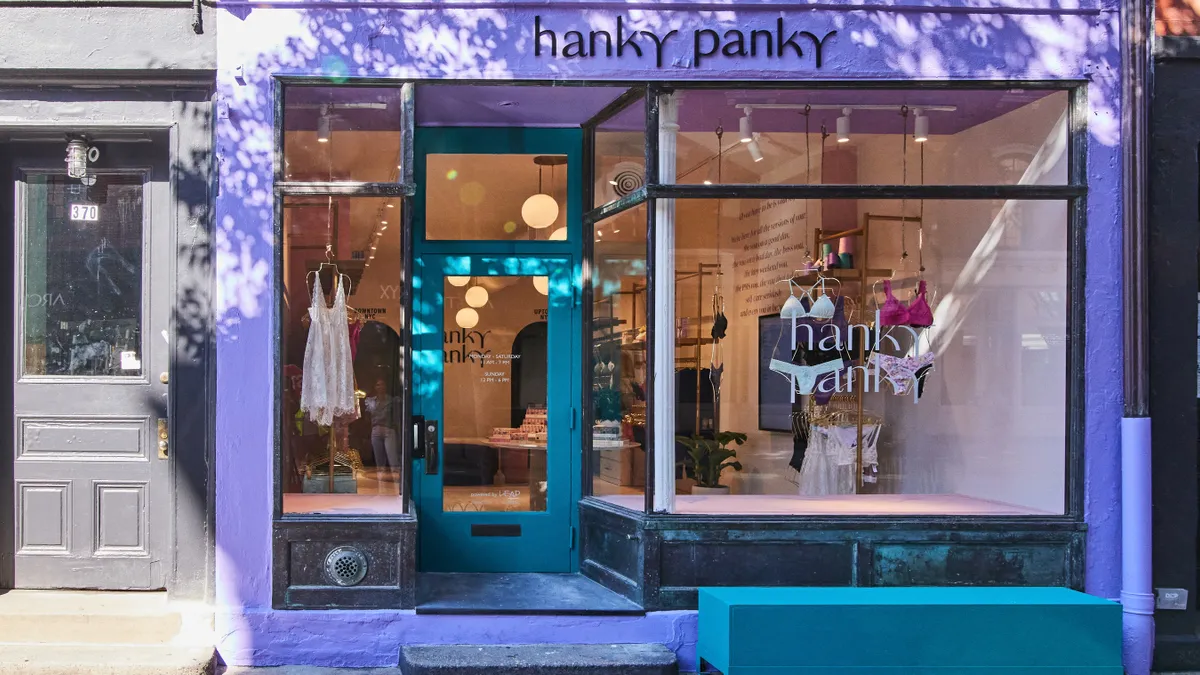Dive Brief:
- Alongside other DTC intimates brands expanding offline, Hanky Panky is opening its first brick-and-mortar store in the West Village neighborhood of New York City, the retailer announced on Friday.
- At the center of the 600-square-foot space stands a wall of thongs with various colors and prints. The brand plans to host in-store events and services, including a physical iteration of its Lingeriecycle recycling program, community events, and meet and greets for its loyalty program members.
- The brand currently has a presence in 60 countries and aims to introduce international shipping soon. It also plans to open 10 more stores across the U.S. by 2025, per the announcement.
Dive Insight:
After more than 40 years in business, Hanky Panky finally decided to open a physical storefront to extend its brand to in-person shopping. At the opening of its first location, the brand plans to unveil exclusive perks for its customers, including a build-your-own-bundle option.
“Hanky Panky has been a staple in the industry and in women’s lives for more than four decades, and we’re so excited to announce we’re officially opening our doors, which will truly bring the brand to life,” Brenda Berger, CEO of Hanky Panky, said in a statement. “Giving our consumers products that set the tone for their day and make them feel [like] their best selves has always been at the core of what we do, and we're thrilled to be able to do that in a whole new, more personal way.”
Hanky Panky joins other undergarment brands in opening physical stores. Intimates brand Knix announced plans last September to open its first U.S. store in Santa Monica, California, to be followed by locations in San Francisco and San Diego. Earlier this year, Rihanna’s Savage X Fenty brand debuted its first store in Las Vegas and announced plans to open six more locations in Detroit, Chicago, Atlanta, St. Louis and other cities.
The pandemic served as a speed bump for some DTC brands expanding into offline retail. ThirdLove, for example, debuted its first brick-and-mortar store in New York City in 2019 before the COVID-19 pandemic disrupted in-store retail and caused the location to close. This year, as the pandemic enters a new phase, the brand decided to explore a physical storefront again, deploying lessons from its successful pop-up shop this time around.
While DTC brands have long connected directly with online consumers, some have begun to see physical stores as another marketing opportunity to reach new shoppers. But unlike traditional retailers, many DTC brands have opted for smaller storefronts that serve as showrooms rather than inventory storage, experts told Retail Dive.














